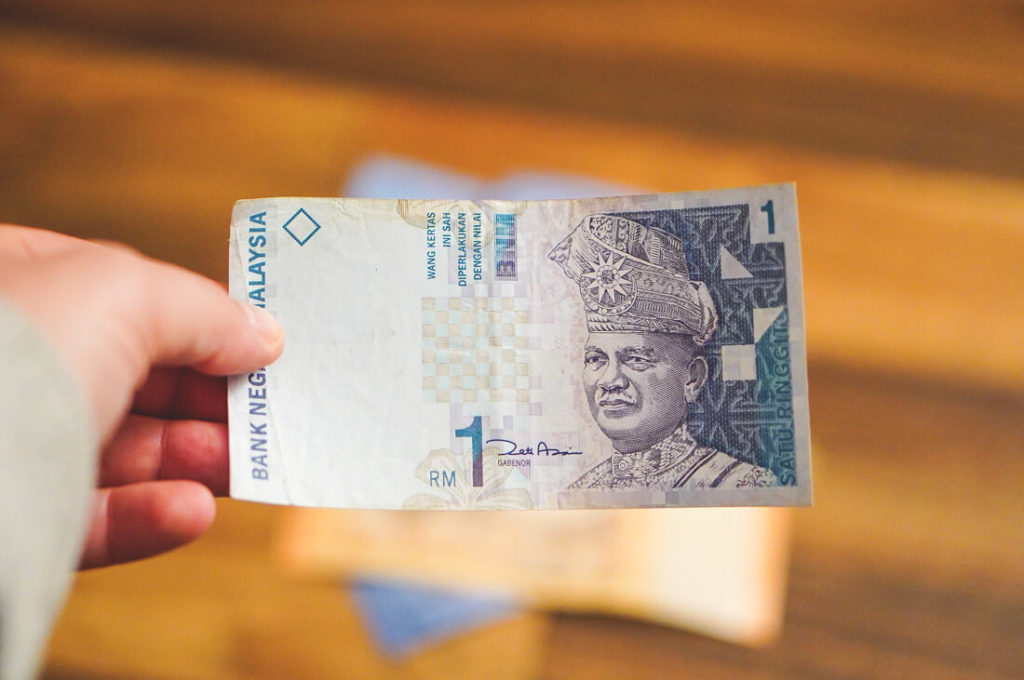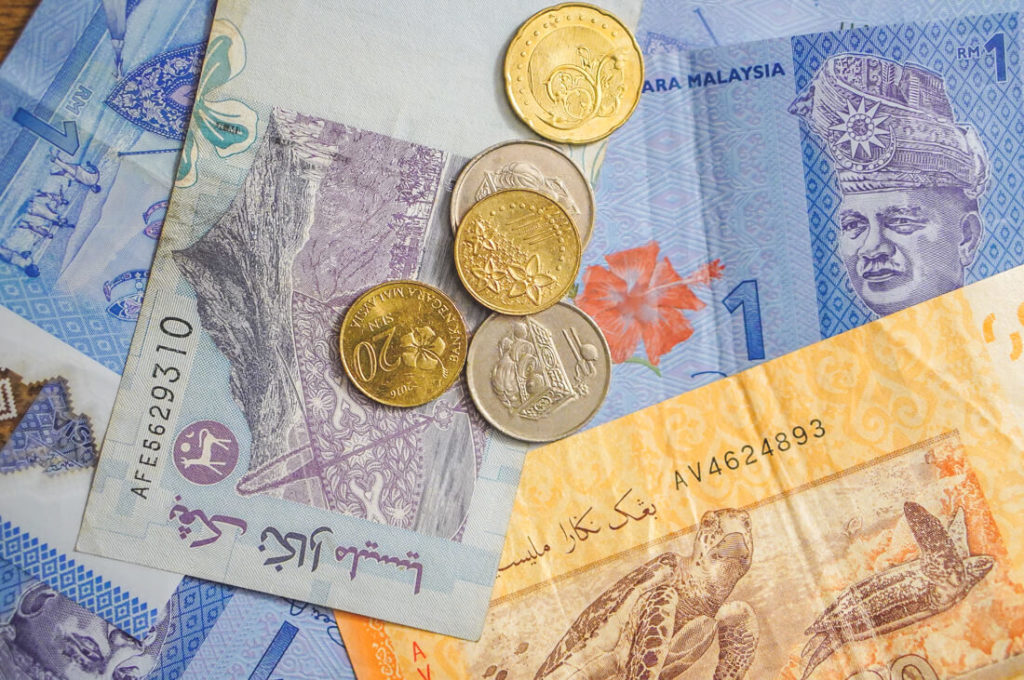Malaysia is a fascinating travel destination known for its beautiful islands, vibrant cities like Kuala Lumpur, and impressive rainforests. But before you set off on your exploration, you should learn about the currency in Malaysia and the best payment options. In the following article, you will learn everything you need to know to manage your money in Malaysia in a relaxed manner.
- Currency in Malaysia
- Paying in Malaysia
- Withdrawing money in Malaysia
- Fees for withdrawing money
- Exchanging money locally
- Paying with a credit card
- The best credit card for Malaysia
- Prices in Malaysia
- Conclusion on the currency
Important topics and reports
- Best time to travel to Malaysia
- Entry & Visa Malaysia
- Backpacking in Malaysia
- Malaysia Travel Tips & Info
- Excursion: Cameron Highlands
- Street Art in George Town
- Our best Penang tips
- Sumatra: The last orangutans
- Top Highlights in Kuala Lumpur
- Excursion to the Batu Caves
Currency in Malaysia
The official currency of Malaysia is the Malaysian ringgit (MYR or RM), often simply called “ringgit.” One Malaysian ringgit is divided into 100 sen. Coins are available in denominations of 5, 10, 20, and 50 sen, while notes are available in denominations of 1, 5, 10, 20, 50, and 100 MYR. Sometimes the currency is even indicated with the $ sign, as it is often referred to as the Malaysian dollar by locals.
Current exchange rate (as of November 2025):
- 1 Euro ≈ 5 Malaysian Ringgit
- 1 US Dollar ≈ 4.6 Malaysian Ringgit

Paying in Malaysia
Cash is still the preferred means of payment in Malaysia, especially in rural areas, at street food stalls and in markets. Always keep some cash on hand for small purchases.
In cities (e.g., Kuala Lumpur) and tourist areas, you can easily pay with a credit card in hotels, restaurants, shopping malls, and larger stores. However, we recommend that you avoid using your card in small shops or remote areas to avoid fraud.
Malaysia is advanced when it comes to digital payment methods. While most options are less relevant for tourists, they can be useful if you are staying in the country for a longer period of time. Many locals use apps such as:
- GrabPay
- Atom
- Apple Pay
- 7-Eleven Malaysia
- Touch ‘n Go eWallet
Withdrawing money in Malaysia
Nowadays, withdrawing money is no longer a problem in Malaysia. In cities, you can find numerous ATMs where you can easily withdraw money using your Visa or MasterCard, as well as Maestro or Cirrus debit cards. The ATMs display an ATM symbol, which means you can easily withdraw cash there using your European card.
You can find ATMs on every corner in cities and at the airport. Every bank also has one or more ATMs. However, if you’re heading to more remote areas, like the rainforest, you should withdraw enough cash beforehand, as ATMs aren’t yet widespread there.
Recommended reliable banks:
- Maybank
- CIMB
- HSBC
Withdrawal Fees
An often underestimated aspect of withdrawing money is the fee your bank charges you for each withdrawal. This is usually a foreign withdrawal fee of 1 to 4% of your withdrawn amount for credit cards.
If you want to withdraw money with your debit card, you’ll usually be charged between €5 and €10. So be careful, as this can quickly add up, especially on a longer trip, and only puts an unnecessary strain on your travel budget. Instead, try to withdraw a little more money when withdrawing from an ATM.
Depending on your credit card and Malaysian ATM, you can withdraw a maximum of 1500 MYR (approx. €321) per withdrawal and 3000 MYR per day (approx. €624).
Exchanging money locally
If you prefer to travel with cash and exchange your euros for ringgit, I recommend doing this in the country itself, as you’ll get a very poor exchange rate at German banks. Immediately after landing, the first exchange offices await you in the arrivals area of the airport.
Here you can exchange your first euros for Malaysian ringgit. However, I don’t recommend exchanging large amounts of money yet, as the exchange offices at the airport offer a much worse rate than those in the city or in the shopping malls.

It’s better to use Google Maps to search for a licensed exchange office in the city or ask at your accommodation. You can usually find one with a reasonable rate in every shopping mall. You can also exchange your euros for ringgit at banks, although the exchange rate is usually worse there.
Here are a few exchange offices in Kuala Lumpur:
- Vitale Rate (Pavilion Mall, 168 Jalan Bukit Bintang)
- DFB Exchange by Damansara Forex (Jalan Stesen Sentral)
- Alinoor Money Exchanger (41 Jalan Ampang)
Paying by Credit Card
Cashless payments are widespread in Malaysia in hotels, upscale restaurants, shopping malls, at the airport, and at rental car stations, and are therefore easily possible. VISA and MasterCard are generally accepted, but payment by debit card is also possible in many places.
As with cash withdrawals, you must keep in mind that your bank in Germany will charge you foreign transaction fees for this. This is usually between 1 and 2% of the total amount.
It’s therefore worthwhile to have a free travel credit card with you. If you’re planning a trip into the interior of the country or want to visit one of the traditional markets, you should definitely have enough cash in the local currency with you, as cashless payments with credit cards are usually not possible there.
Even smaller restaurants and street food stalls usually only have cash. If you travel frequently, it’s worth having a credit card with no foreign transaction fees. Good options include:
The best credit card for Malaysia
Are you looking for a suitable credit card for your trip to Malaysia? We use a combination of different credit cards when traveling to remain flexible and save on fees.
The DKB Visa* is particularly practical, as it allows us to withdraw money free of charge at many ATMs worldwide. The Hanseatic GenialCard* is a great addition, as it also charges no foreign currency fees, no annual fee, and no withdrawal fee.
We’re also still very satisfied with the N26 MasterCard*. It’s a type of “top-up credit card.” So, you load €200, for example, beforehand and can then withdraw it at an ATM. You can also change the PIN in the app directly after using the card. We find that quite practical.
We also carry an American Express card (Amex)*, which often scores highly for larger hotel bookings or car rental companies – and also offers great bonus programs thanks to Membership Rewards. With this selection, we’re prepared for every situation and minimize costs.
You can take a closer look at the different cards in our extensive credit card comparison. We definitely recommend having at least two credit cards when traveling abroad. It can always happen that one card isn’t accepted, stolen, or blocked. And what do you do then? You’ll have no access to your money for a while. All information can be found here: Security tips for credit cards.
Other popular credit cards for travel to Malaysia:
- Revolut Card (+ Revolut App)
- Barclays Visa Card
- awa7 Visa Card*
Important criteria when choosing a travel credit card:
- Foreign currency fees: Make sure there are no or low fees for payments in foreign currencies.
- Cash withdrawals: Ideally, free withdrawals should be possible worldwide.
- Annual fee: Many cards offer no annual fee.
- Additional benefits: Travel insurance or cashback programs can offer additional benefits.
Before applying, you should carefully review the terms and conditions of each card and compare them with your own travel habits.
Prices in Malaysia
To give you a brief overview of the costs you’ll incur in everyday life in Malaysia, I’ve listed a few prices for Malaysia here. This way, you can roughly plan how much money you should have available each day.
Malaysia is generally a fairly affordable travel destination, although of course not as cheap as, for example, Thailand. Public transport, street food, and accommodation are relatively inexpensive in Malaysia.
- Hostel accommodation: €5 to €10
- Hotel room: from €20 to €30
- Street food: €1 to €2
- Restaurant visit: €5 to €10
- Bottle of water: €0.60
- Small beer: €3.20
- Taxi ride per kilometer: €0.60
- Gasoline: €0.46 per liter
- Bus rides: from €0.60
Conclusion on the currency
As you can see, traveling in Malaysia is quite feasible even on a smaller budget. By Asian standards, accommodation is only slightly more expensive than in neighboring Thailand and Indonesia. If you don’t have a credit card yet, you should definitely consider getting a free travel credit card.
Otherwise, nothing should stand in the way of your trip to Malaysia. Look forward to plenty of culture, stunning landscapes, cool cities, and delicious Asian cuisine!